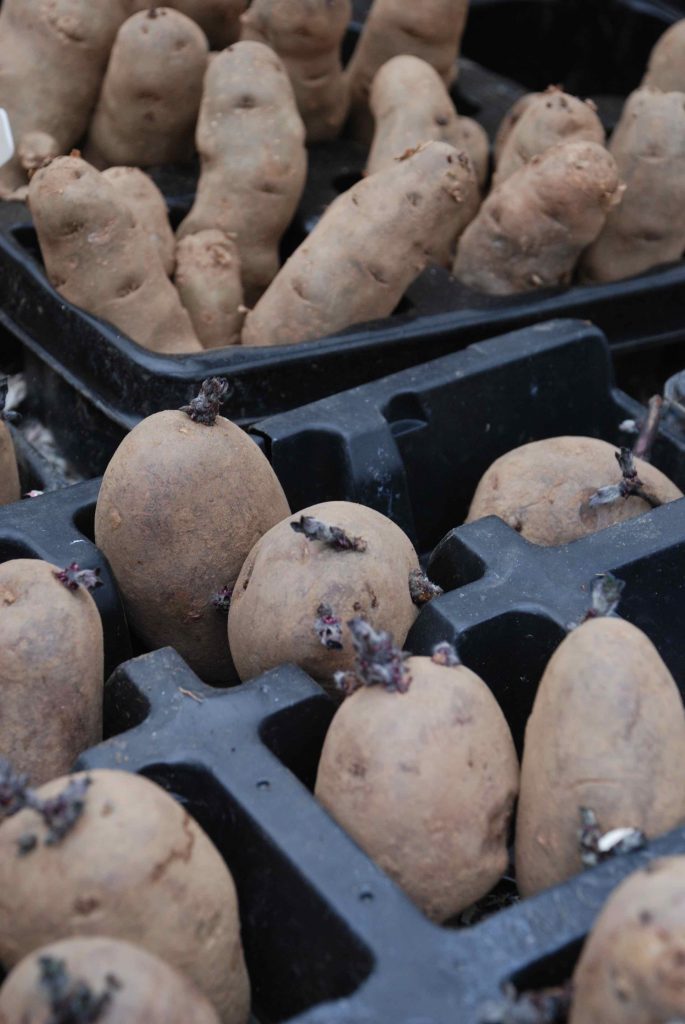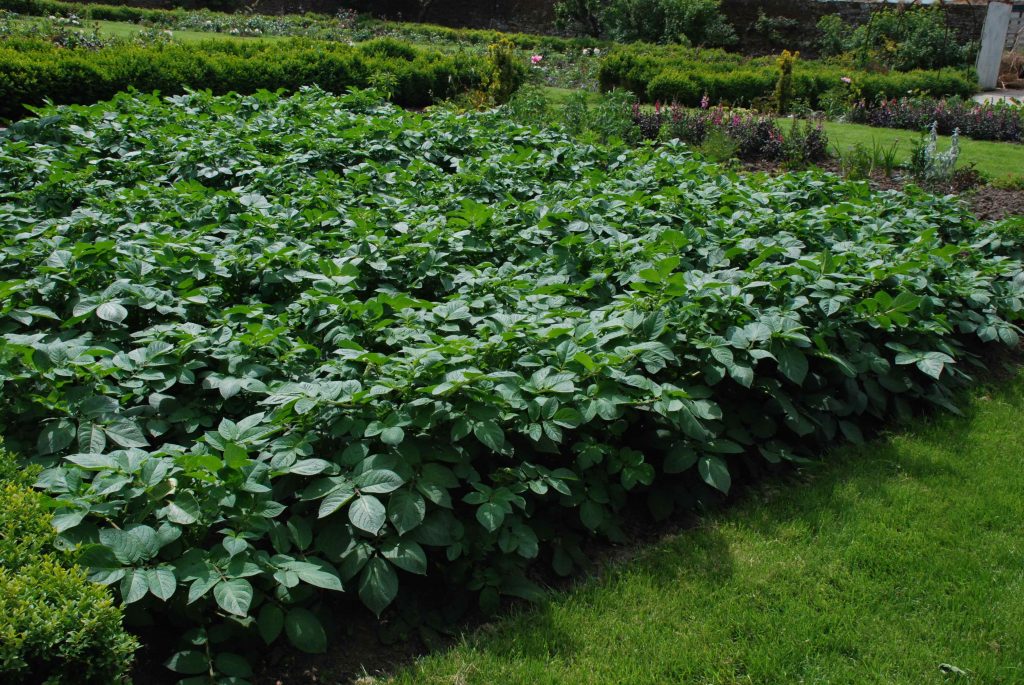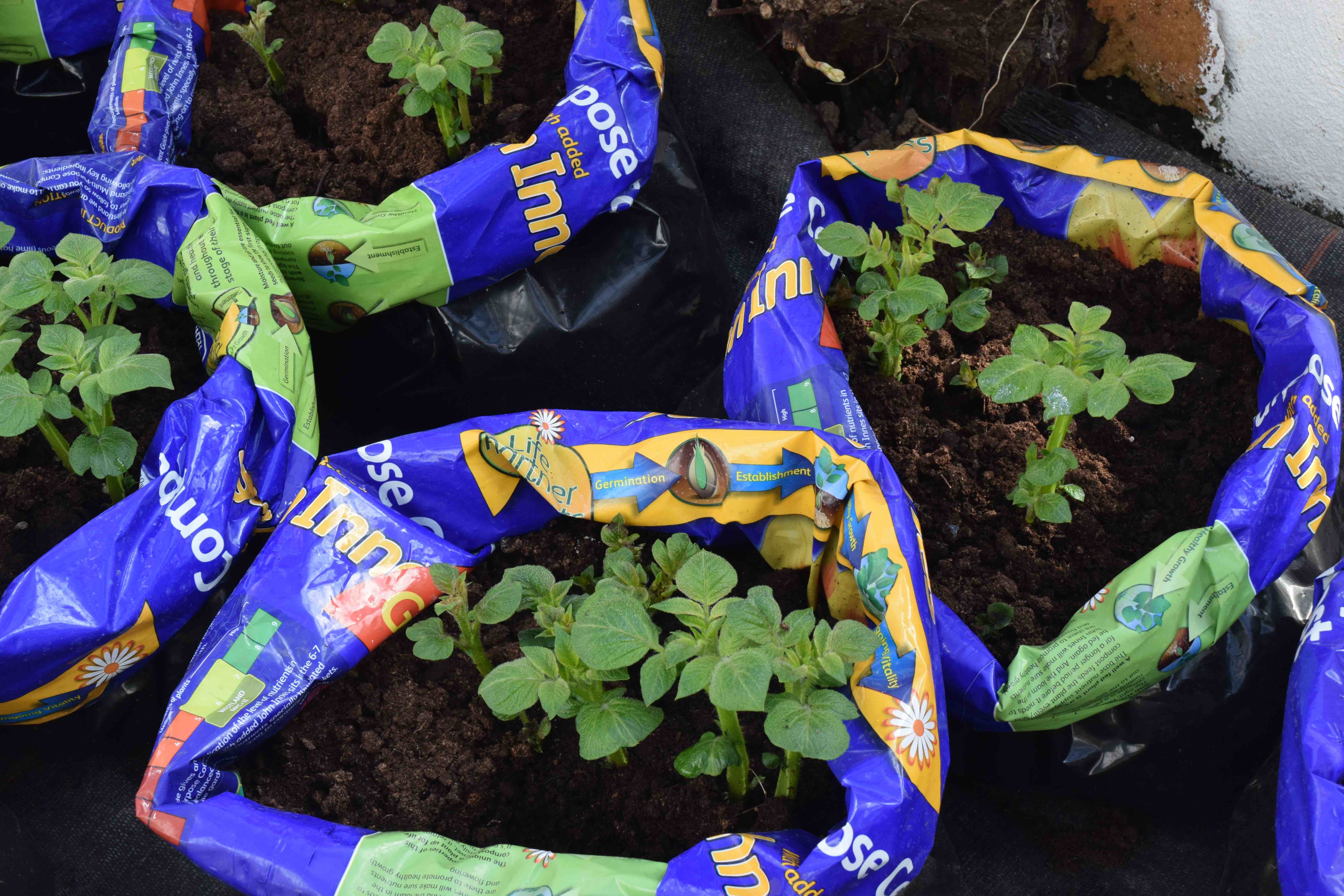For a great crop of potatoes it pays to start early

Although there is always debate about whether you should chit (sprout) potatoes before you plant them, and I have not done definitive trials, I think it makes sense to do so if you get your seed potatoes early. Nags Hall are open so you can buy yours now.
Perhaps it is useful to explain a few things first though. Seed potatoes are not actually seeds at all. Although potato plants often do produce round berries that contain seeds (these are not edible) these are not used to grow crops. Seed potatoes are actually just small tubers but they have been grown, usually in Scotland, in areas where common potato diseases are not prevalent and the tubers are certified to be free of disease.
Never use spare, sprouted potatoes from your veg rack. These may have spores of blight or other problems on the skins and you don’t want to start the season with problems.
Choose your type
You then need to choose your type. Traditionally all potatoes are divided into early, or first early, second early and maincrop. This refers to how long they take to mature (make tubers). Maincrop have the heaviest crops and they can be stored but, because they are not ready to lift until September and October, they are more prone to Potato Blight than First early and Second early types which are often lifted by late July when blight becomes a problem.
All are planted at about the same time. Then you have to choose whether you like floury or waxy potatoes. And then there are salad potatoes, which are usually waxy. Despite the fact that you may want to use these in summer, for salads, these are not usually early varieties so waxy early varieties may be best for this.
Because potatoes are relatively cheap to buy in shops and they do involve a fair amount of work I would suggest that you grow something unusual at home. Purple-fleshed and red-fleshed potatoes are no more difficult to grow than others but almost impossible to buy in shops.

Because blight can be such a problem, especially in wet summers, look for resistant varieties. I have tried all the ‘Sarpo’ varieties (above) and these are excellent. They crop heavily too. Some people don’t think they are the best flavoured varieties I found them absolutely fine. The only problem with them is that they are very vigorous and the tops (haulms) are very tall – in excess of 1.2m in my experience.
Potatoes take up a lot of space in the garden. Early varieties should be about 40cm apart in rows 60cm apart and matincrops 60cm apart in rows 90cm apart. But they can be grown in pots on the patio if you do not have much space. For this purpose, choose First earlies or Second earlies. These will crop when New Potatoes are at their best and most expensive.
Depending on the spring, potatoes can be planted in mid March. Traditionally potatoes are planted on Good Friday, although in Ireland it is St Patrick’s Day (March 17th). The latter is more logical since Good Friday moves around each year. It is April 2 this year which is actually a good time to aim for.
The leafy growth will be killed by frost so, as they grow, the plants are earthed-up. This means covering the shoots with soil to protect them from late frosts but it also ensures that any tubers that form will not be exposed to light, which makes them green and inedible.
Growing in containers
One of the best ways to grow potatoes is in containers. It is ideal if you have not tried them before, have little space and want to avoid weeds and slugs.
You can buy special potato-growing containers but old compost bags are ideal. Make sure they are black inside. 40-60 litre bags are ideal. Turn them inside out so the black is on the outside if looks are important, then make a few slits in the base for drainage. Roll them down from the top so you have an improvised container about 30cm deep. Use fresh multipurpose compost for planting. Put 15cm of compost in the base and then plant two or three seed potatoes on this and cover with 10cm of compost.
The bags must be kept away from frost and until the shoots show they can be kept in a shed. But once green growth appears they must be in sunlight. The good thing is that the bags are easy to move so you can put them out on good days and back in the shed on frosty nights. Keep the compost moist. When the shoots are 15cm high, roll up the bag and add enough compost to cover all but the shoot tips.

By May, the bags can be left out all the time. Of course they can be in a greenhouse or poly tunnel too. Give liquid fertiliser every week. Keep unrolling the bag and adding more compost until the bag is almost full. Then let them grow naturally.
The great thing about bags is that you can push your hand down the side and search for potatoes without having to disturb the whole plant. Once flowering starts there will probably be tubers ready. Once the whole plants have started to die down, possibly in July, you can tip out the whole lot.
Potatoes grown this way are perfect for the kitchen, clean and without slug holes. The compost can be used as a mulch in the garden too.
But back to now.
Chitting or sprouting the potatoes means getting them to make short, sturdy shoots before you plant. As soon as you can after buying your seed potatoes put them in trays with the rose end uppermost. This is the end furthest from the and it was attached to the stem, with the most eyes. Keep them in light and in gentle heat so they make sturdy shoots.
Before planting these are usually reduced to two or three per tuber or large tubers can be cut into two or three sections, each with two or more shoots.
Make sure you plant some mint too, for that first taste of new potatoes in July!